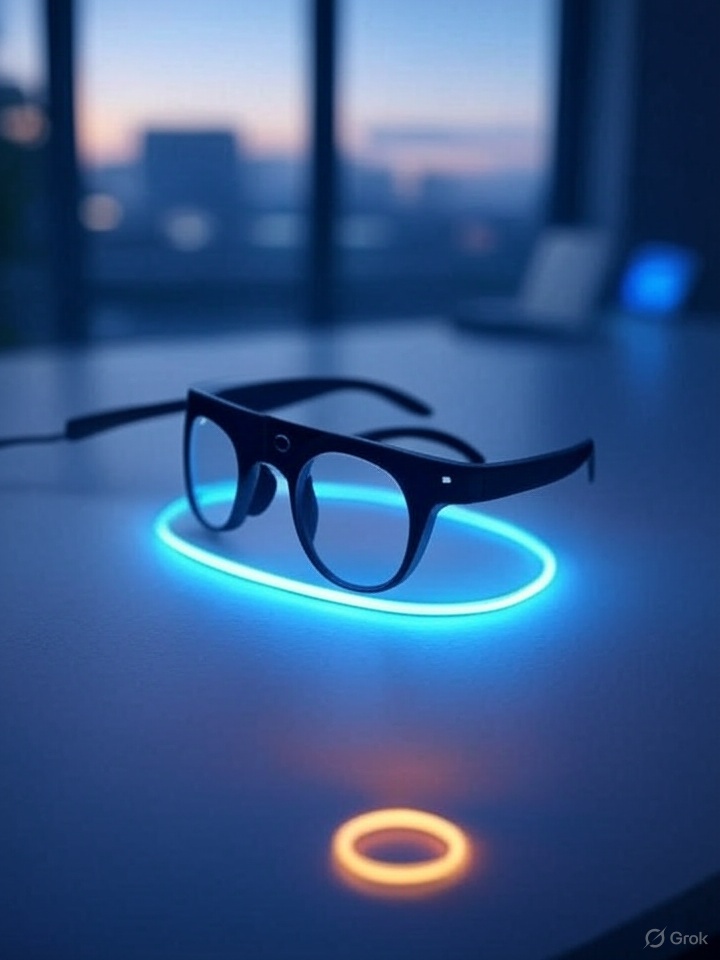
Oakley’s Meta Vanguard AI Sunglasses Are Like Wearing a GoPro and a Garmin on Your Face
The $500 Oakley Meta Vanguard AI Sunglasses promise to fuse Meta’s voice assistant with Garmin’s fitness smarts — turning your shades into a personal coach, action cam, and AI companion. They’re sleek, ambitious, and a little rough around the edges — but they just might point to the future of wearable tech.
When you first slip on Oakley’s Meta Vanguard AI sunglasses, you can’t help but feel a little like Clark Kent hiding his powers in plain sight. Except instead of x-ray vision, you’re packing a fitness coach, action camera, and AI assistant—all behind polarized lenses.
As someone who usually grabs $10 gas station shades, testing these $500 futuristic frames felt like entering another dimension. The Vanguards are equal parts sports eyewear and sci-fi gadget, blending Oakley’s signature wraparound style with Meta’s AI smarts and Garmin’s workout data. It’s a bold collaboration that aims to merge performance, tech, and design into something that feels straight out of a superhero movie.
Design: All Style, Some Substance
Oakley’s heritage in performance eyewear is immediately apparent. The Meta Vanguard AI Sunglasses are rugged, lightweight (66 grams), and molded to cling to your head through every jostle of a trail run or bike ride. The polarized 24K lenses shift tones depending on your outfit — one moment a golden shimmer, the next a subtle bronze. They’re available in blue, red, and black, but the gold finish is the clear showstopper.
That said, comfort isn’t perfect. After long runs, a faint red imprint on my nose bridge reminded me that the future still has weight. The arms are snug — a plus for stability, but a minus for long wear.
Still, the looks alone turn heads. Even if the AI fizzled out tomorrow, you’d still have a pair of great-looking Oakleys with serious street (or trail) cred.
Setup: A Triathlon of Apps
The Vanguards aren’t plug-and-play. You’ll need the Meta AI app on your phone, Garmin’s Connect IQ app for your smartwatch, and a bit of patience. Pairing feels like herding cats — I went through multiple failed workouts before Meta, Garmin, and my Pixel 9 Pro finally synced.
Apple Watch owners are out of luck for now, as Garmin is the only supported partner. And while Meta’s onboarding is detailed, it’s far from seamless. You’ll juggle permissions, firmware updates, and privacy disclosures before you even hit your first trail.
Once everything clicks, though, the experience begins to shine. Meta AI calls out your pace and heart rate mid-run, and you can request stats or even get training suggestions without glancing at your wrist. It’s a taste of what fitness tracking could become: hands-free and frictionless.
Sound and Voice: Open-Ear Brilliance
The glasses hide open-ear speakers in the temples, producing surprisingly crisp and natural audio. It’s not noise-canceling — intentionally so — letting you stay aware of your surroundings during workouts. In most conditions, music and coaching cues sounded clear and balanced.
The only time they struggled was on a windy Golden Gate Bridge ride, where gusts and traffic drowned everything out.
Voice commands, however, worked almost flawlessly. Meta AI responded quickly to questions like “What’s my average pace?” or “How’s my heart rate?” The five-mic array did an impressive job isolating my voice — even capturing my toddler’s laughter from a baby carrier mid-hike.
Just remember: open-ear means open sound. Crank the volume, and your playlist becomes everyone’s problem.
Camera: GoPro, Meet Oakley
The built-in 12MP ultra-wide camera offers a 122° field of view, shooting 3K UHD video and stills without ever touching your phone. Stabilization is rock-solid — even on rocky trails, footage came out smooth and cinematic. AutoCapture mode tries to detect “highlights” automatically, but its definition of “exciting” can be hit-or-miss (it skipped a scenic coyote moment but faithfully recorded me tying my shoe).
Storage clocks in at 32GB, enough for multiple workouts’ worth of clips. You’ll need to sync them through Meta’s app before sharing, which takes time. But when it works, the results look sharp enough for social media or Strava reels.
Battery and Charging: Surprisingly Strong
Meta claims nine hours of mixed-use battery life, and my testing backed that up. After a two-hour run with recording and coaching active, I still had 75% left. The charging case doubles as a portable power bank, giving you a quick 50% refill in just 20 minutes — a small but meaningful touch for adventurers on the move.
Privacy and Data: The Trade-Off
Here’s the catch: to unlock the full experience, you’ll need to share a lot of personal data — from fitness metrics to voice queries. Meta makes its disclosures clear, but they’re numerous, and the reminder that your sunglasses are quietly learning from your every move may give privacy hawks pause.
It’s a “pay-to-play” model where data becomes currency — something potential buyers will need to weigh carefully.
The Verdict: Futuristic, Flawed, and Full of Potential
The Oakley Meta Vanguard AI Sunglasses are not for everyone. They’re expensive, complex, and occasionally finicky. But when they work, they deliver an experience unlike anything else on the market — a seamless fusion of vision, audio, and data that feels just a few firmware updates away from brilliance.
They’re ideal for athletes who need hands-free insights at high speed — cyclists, skiers, marathoners — or for anyone who loves the thrill of testing tomorrow’s tech today.
The rest of us? We’ll wait for version two.
Bottom line:
The Oakley Meta Vanguard AI Sunglasses show us a future where your eyewear isn’t just protecting your eyes — it’s capturing your world, coaching your pace, and whispering your stats in real time. Not quite superhero gear yet, but close enough to make you believe.


